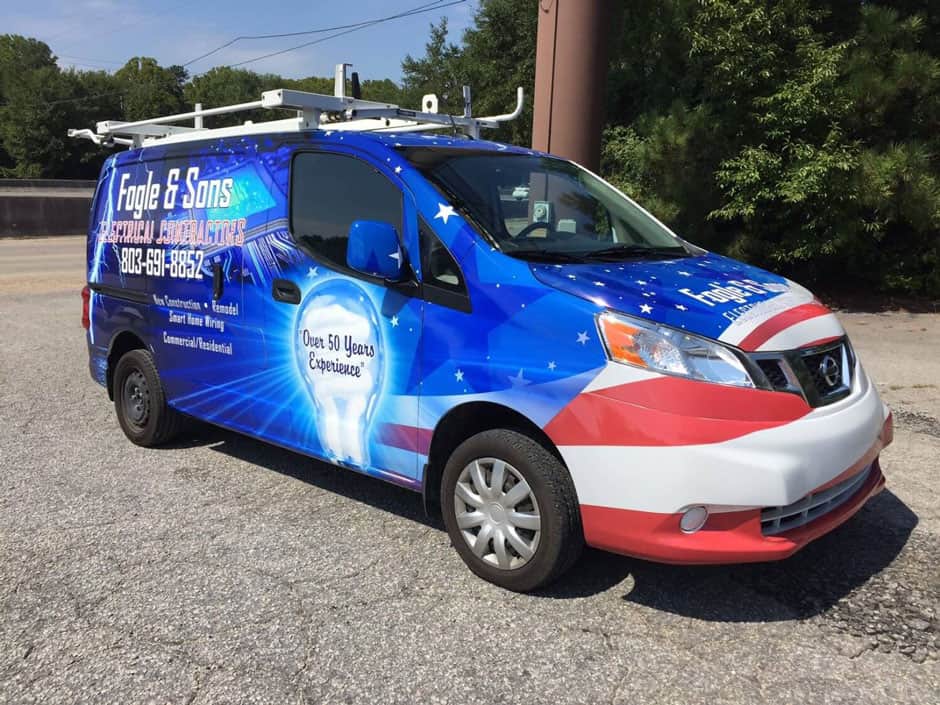The Ultimate Guide to Vehicle Wraps: Transform Your Ride

In the world of automotive customization, vehicle wraps have emerged as a popular and versatile option. A vehicle wrap involves covering a car, truck, van, or any other vehicle with a thin, adhesive vinyl film that can transform its appearance dramatically. This method offers an array of benefits, from aesthetic enhancements to protective functions. Whether you’re a business owner looking to advertise or an individual wanting to give your car a fresh look, vehicle wraps are an excellent choice. In this guide, we will delve into the various aspects of vehicle wraps, including their benefits, the design process, types of wraps, and maintenance tips.
Benefits of Vehicle Wraps
Aesthetic Appeal and Customization
One of the most significant advantages of vehicle wraps is their ability to offer unparalleled customization. Unlike traditional paint jobs, wraps come in an extensive range of colors, finishes, and designs. You can choose from gloss, matte, satin, chrome, carbon fiber, and even custom printed graphics. This flexibility allows you to create a unique look that reflects your personality or brand identity. Additionally, vehicle wraps can be easily updated or changed, providing a cost-effective way to keep your vehicle’s appearance fresh and exciting.
Protection and Preservation
Vehicle wraps not only enhance the look of your car but also protect it. The vinyl film acts as a shield against minor abrasions, scratches, and UV rays. This protective layer helps preserve the original paintwork, which is particularly beneficial for maintaining the vehicle’s resale value. If the wrap gets damaged, it can be repaired or replaced without affecting the underlying paint. Moreover, the wrap can be removed without leaving any residue, making it a reversible modification.
Cost-Effectiveness
Compared to a high-quality paint job, vehicle wraps are generally more affordable. They offer a similar level of aesthetic appeal without the hefty price tag. Additionally, the installation process is quicker, reducing labor costs. For businesses, vehicle wraps provide a cost-effective advertising medium. A branded vehicle wrap turns your vehicle into a mobile billboard, reaching a wide audience wherever you go. This form of advertising is highly effective and offers a significant return on investment.
The Design Process
Conceptualization and Design
The first step in the vehicle wrap process is conceptualization. This involves deciding on the overall look and design you want for your vehicle. If you’re working with a professional wrap company, their design team will typically use specialized software to create a digital mockup of your vehicle with the proposed wrap design. This allows you to visualize the end result and make any necessary adjustments before moving forward.
Material Selection
Choosing the right material is crucial for the success of your vehicle wrap. There are various types of vinyl films available, each with different characteristics. Cast vinyl is a popular choice due to its durability and conformability to complex surfaces. Calendared vinyl, while less expensive, is more suitable for flat or simple curves. The choice of finish (gloss, matte, satin, etc.) also plays a significant role in the final appearance of the wrap. Consulting with your wrap installer can help you make informed decisions about material selection.
Printing and Prepping
Once the design is finalized and the materials are chosen, the next step is printing the wrap. High-resolution large-format printers are used to produce the vinyl film with vibrant colors and sharp details. After printing, the wrap is laminated to protect the graphics and extend its lifespan. Prepping the vehicle is also a critical step. The car must be thoroughly cleaned and any imperfections must be addressed to ensure the wrap adheres properly and looks seamless.
Installation
The installation process requires precision and skill. Professional installers use heat guns and squeegees to apply the wrap to the vehicle’s surface, ensuring it conforms to every contour and curve. Proper installation is key to achieving a flawless finish and maximizing the wrap’s longevity. Depending on the complexity of the design and the vehicle’s size, installation can take anywhere from a few hours to a couple of days.
Types of Vehicle Wraps
Full Wraps
As the name suggests, full wraps cover the entire surface of the vehicle. This option is ideal for those looking to make a dramatic transformation or businesses seeking maximum advertising exposure. Full wraps offer the most protection and can completely change the color and finish of the vehicle.
Partial Wraps
Partial wraps cover specific sections of the vehicle, such as the hood, roof, or sides. This option is more cost-effective than a full wrap and allows for targeted customization. Partial wraps are often used in conjunction with the vehicle’s existing paint to create striking designs.
Color Change Wraps
Color change wraps are designed to alter the vehicle’s color without adding any graphics or branding. They are a popular choice for individuals who want to change the look of their car without committing to a permanent paint job. These wraps can be easily removed or changed if you decide to revert to the original color.
Commercial Wraps
Commercial wraps are tailored for businesses looking to advertise on their vehicles. These wraps typically feature company logos, contact information, and promotional graphics. They are a cost-effective way to reach a broad audience and enhance brand visibility.
Maintenance and Care
Cleaning
Proper maintenance is essential to prolong the life of your vehicle wrap. Regular cleaning helps prevent dirt and grime from damaging the vinyl. Hand washing with a mild detergent and a soft cloth or sponge is recommended. Avoid using abrasive materials or high-pressure washers, as they can damage the wrap. It’s also advisable to avoid harsh chemicals and solvents that could degrade the vinyl.
Protection
To keep your wrap looking its best, park your vehicle in a shaded area or use a car cover when possible. Prolonged exposure to sunlight can cause the colors to fade over time. If you notice any edges lifting or bubbles forming, it’s important to address these issues promptly to prevent further damage.
Repairs and Replacements
Despite your best efforts, your vehicle wrap may sustain damage over time. Minor issues such as scratches or small tears can often be repaired without replacing the entire wrap. For more significant damage, partial replacements can be done to restore the wrap’s appearance. Always seek professional assistance for repairs to ensure a seamless result.
Vehicle wraps offer a versatile and cost-effective way to transform your vehicle’s appearance, protect its paint, and even serve as a powerful advertising tool. With a wide range of designs and finishes available, there’s a wrap to suit every taste and need. By understanding the benefits, design process, types, and maintenance requirements, you can make an informed decision and enjoy the many advantages that vehicle wraps provide. Whether you’re looking to make a bold statement or subtly enhance your vehicle, a wrap is a fantastic option to consider. Request a quote today!
Three Locations to Serve You
Charleston, SC
(843) 552-2626
Columbia, SC
(803) 731-2001
Jacksonville, FL
(904) 724-4321



0 Comments